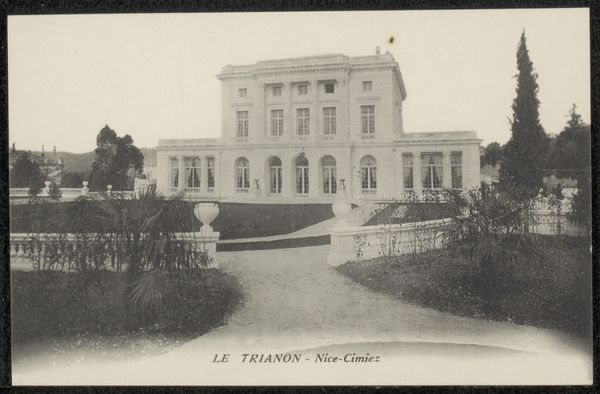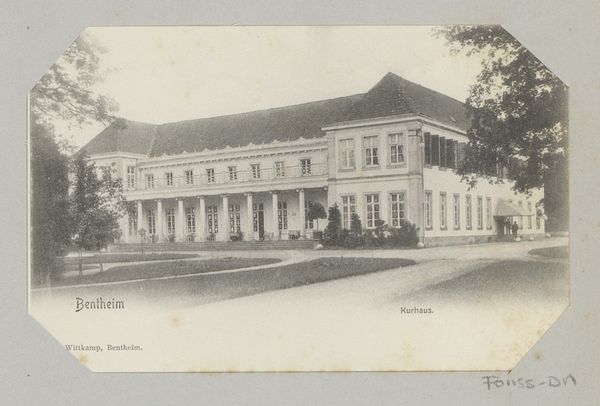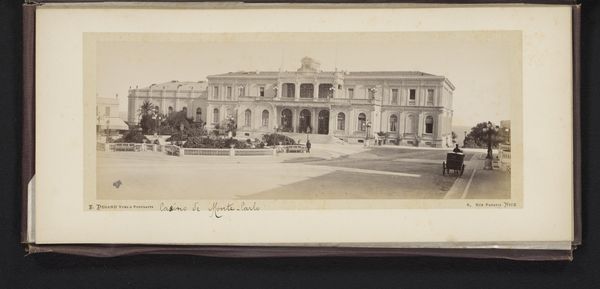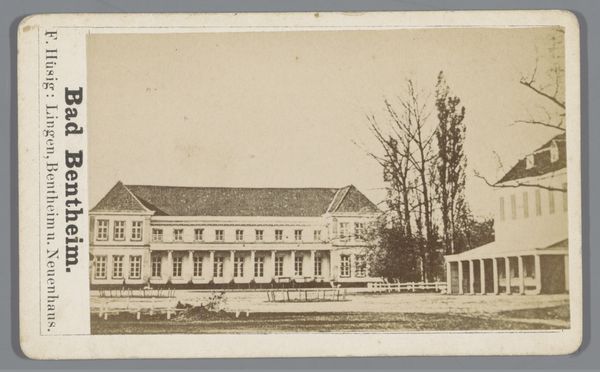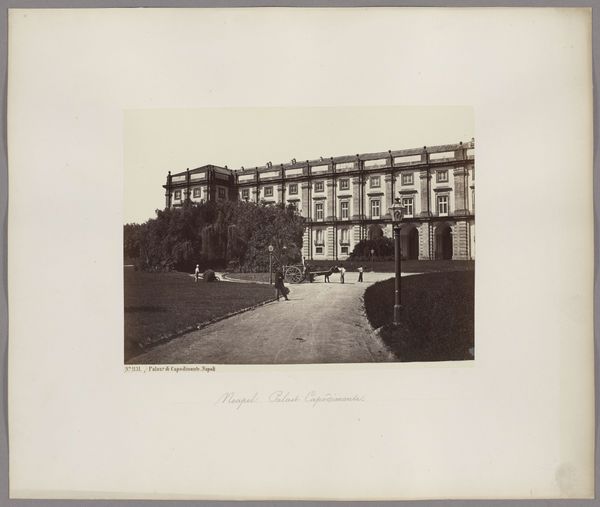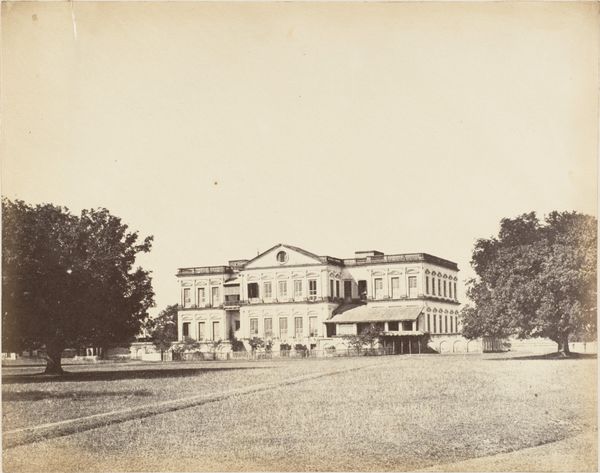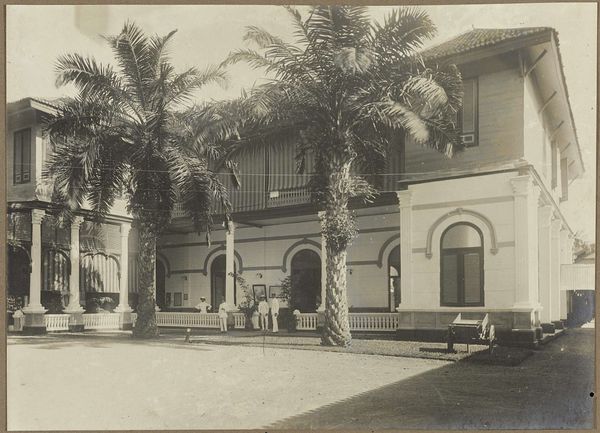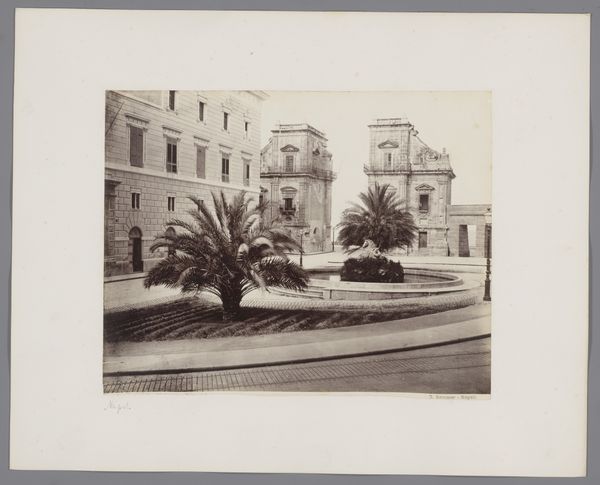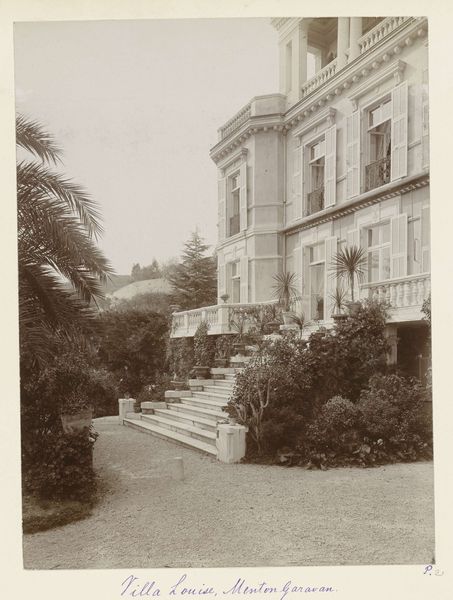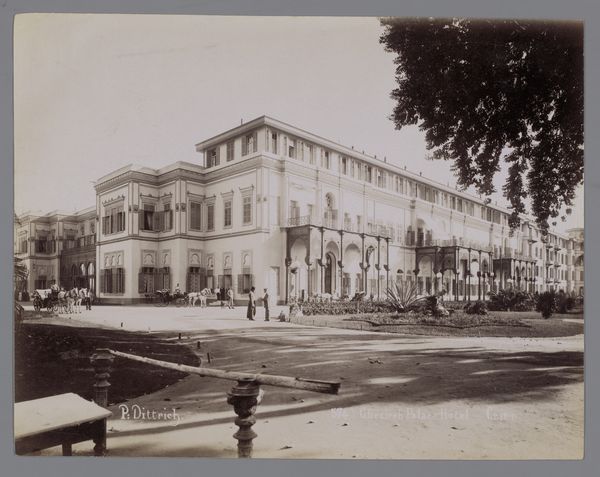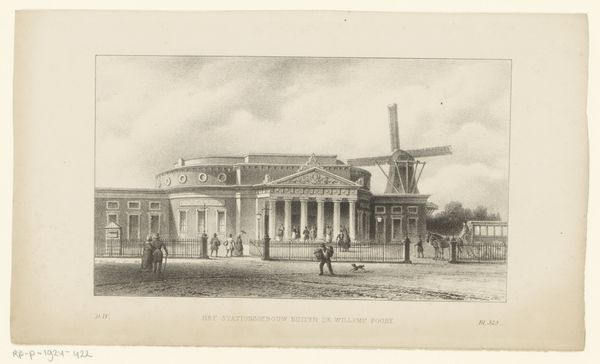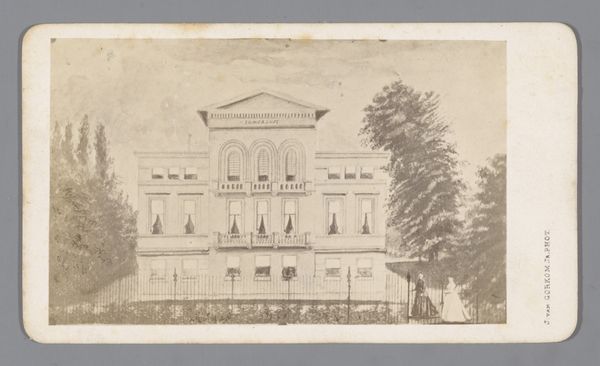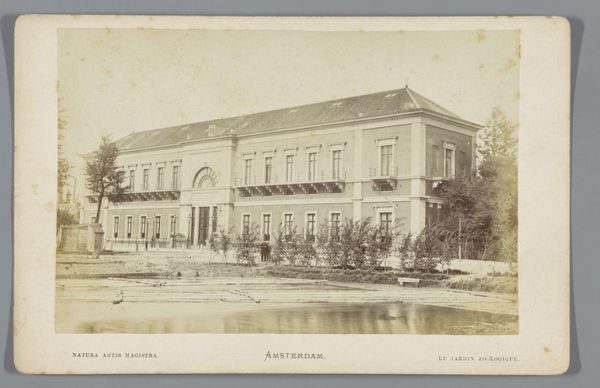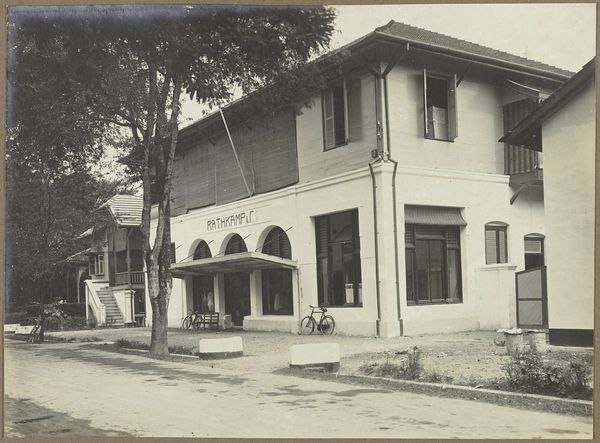
Copyright: Rijks Museum: Open Domain
Curator: This work is a photographic print from the archive of Philip Zilcken, created sometime between 1867 and 1930. Editor: The mood it evokes is instantly serene, with an underlying feeling of antiquated grandeur. It whispers stories of lavish parties, secret liaisons in shadowy corners of manicured gardens, like an untold Chekov play just waiting to happen. Curator: The title indicates this is “Le Trianon,” located in Nice-Cimiez, in the south of France. The production process would be quite labor-intensive – the albumen print suggests meticulous preparation, from coating the paper with egg whites to the long exposure times required to capture the image. Think of the artisanal darkroom work, now replaced by a click. Editor: Ah, I see that Neoclassical façade rendered in warm sepia tones. This photographic lens gives it an enduring elegance; those repeated window panes and rigid balustrades speak of absolute power—a relic in a changing world. Curator: Indeed. What’s interesting is thinking about photography’s place in documenting architecture and its role as both objective record and idealized representation. Zilcken, as a prominent artist and critic himself, certainly understood these tensions. Editor: Do you think he yearned to immortalize buildings like this on film because he knew modernity would disrupt these bastions of civilization? Or maybe to make beauty accessible, in the early age of reproduction, democratizing taste for the middle class? Curator: I think you touch on a crucial element: The very consumption of architecture through these reproducible postcards hints at broader socio-economic shifts. And it brings up questions about value. Is it about what you show, how you make, or who buys that decides what’s truly precious. Editor: Yes, something quite profound about capturing an aesthetic now relegated to the past; it feels oddly melancholy but not mournful... reflective, almost. This fleeting quality makes me consider how images help shape both remembrance and longing. Curator: Precisely! A tangible reminder about our transient relationship with art. Thank you for providing those valuable insights! Editor: Likewise! Analyzing art feels just as precious to me. It can make visible both what stands out and what almost vanishes.
Comments
No comments
Be the first to comment and join the conversation on the ultimate creative platform.
